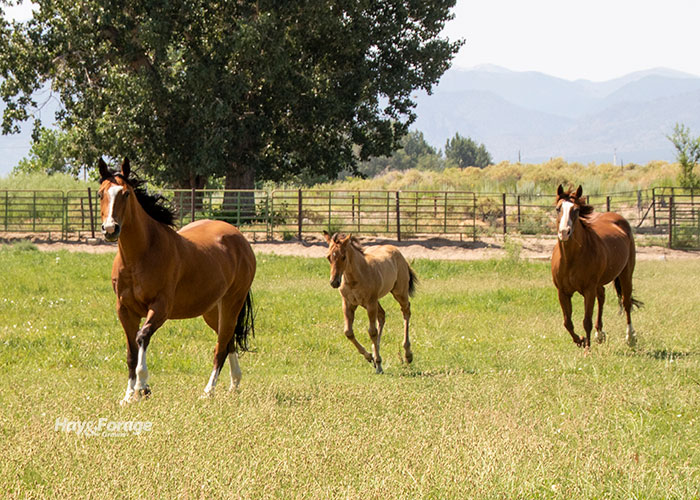
Although cattle may be the regular customers at many grazing operations, horses also have a rightful seat at the table. With that said, preparing spring pastures for equine is similar to doing so for bovine, but there are some nuances to consider.
In a recent issue of Horse Newsletter by University of Minnesota Extension, Krishona Martinson advises horse owners on how to shift to spring grazing. The extension equine specialist provides several tips to improve the transition.
Evaluate last year’s grazing system. “Think about how your pasture worked, or did not work, in previous years,” Martinson states. “Some items to consider include stocking rate, paddock size and shape, number of paddocks, amount of forage, weed control, and fertility. Keeping a grazing log and using aerial images can help you optimize pasture growth and meet your pasture management goals,” she adds.
Assess equipment in the field. Check fences and repair any damage that may have occurred over the winter, and make sure all gates are closed and latched. Water sources must also be clean and in working condition. In addition, survey pastures for debris and remove any plastic, garbage, or unwanted branches from the field.
Take soil samples and fertilize. Martinson recommends testing soil every three years, and notes that a soil sample should represent an area that is uniform in soil type, topography, management, and plant species. Take samples from multiple sites within a grazing system, then analyze test results to determine a field’s pH and nutrient needs.
“When applying fertilizer, it is best to apply half of the amount in early spring, and the other half in the middle of June,” Martinson suggests. “The ideal time to fertilize is right before a gentle, soaking rain. Keep horses off the pasture until you can no longer see the fertilizer pellets.”
Control weeds. Mow pastures or administer herbicide to eliminate annual weeds. For the latter method, Martinson reminds horse owners to follow directions on product labels and adhere to herbicide restrictions.
Ensure animal health. Before turning horses out to graze, schedule yearly dental exams and annual vaccinations with a veterinarian. These animals are also susceptible to parasites, so it is critical to test horse manure for fecal eggs and deworm accordingly.
Gradually switch to grass. Delay grazing until plants are approximately 6 to 8 inches tall. Then, slowly acclimate horses to pastures by allowing them to graze for a short time and work up to longer increments. For example, start with a 15-minute grazing period and allocate an additional 15 minutes each day. When horses reach five consecutive hours on pasture, they can begin grazing without restriction.
“A gradual change from one feedstuff to another provides enough time for the microbial population to adjust,” Martinson says. “Without an adjustment period, these specialized gut microbes can die off after a rapid diet switch, which can result in the release of toxins and possible bouts of laminitis and colic.”
Continue feeding horses their normal hay diet prior to turning them out to graze. Martinson says this will prevent animals from consuming too much new growth, which is high in nonstructural carbohydrates. Furthermore, remove horses from a paddock when forage height is reduced to about 3 to 4 inches.
Implement rotational grazing. “Grazing requires flexibility to respond to plant growth, which depends on weather conditions,” Martinson notes. “Having a dry lot, multiple pastures, and practicing rotational grazing can help buffer adverse weather conditions. It also makes resting, mowing, fertilizing, controlling weeds, and dragging pastures more manageable.”

Amber Friedrichsen served as the 2021 Hay & Forage Grower editorial intern. She currently attends Iowa State University where she is majoring in agriculture and life sciences education-communications and agronomy. Friedrichsen grew up on her family’s diversified crop and livestock farm near Clinton, Iowa.

